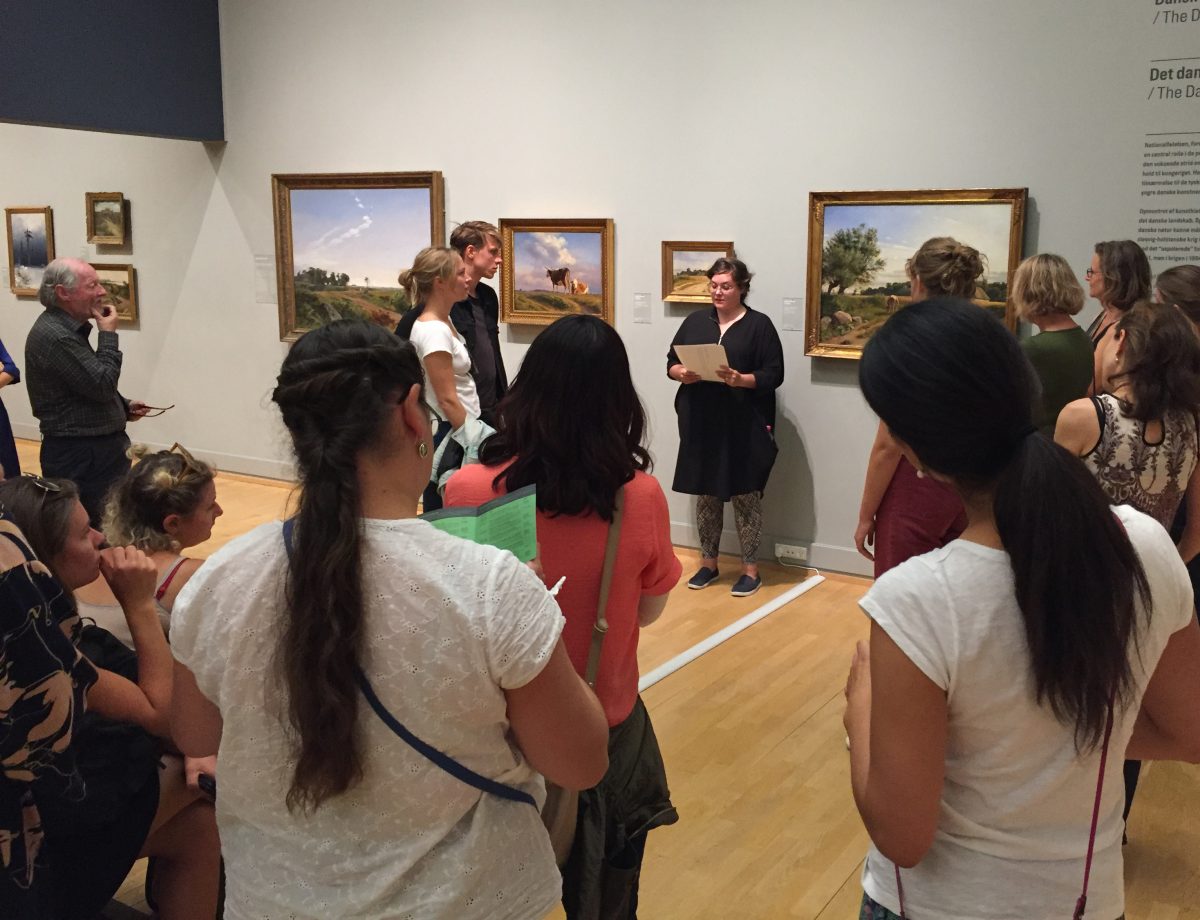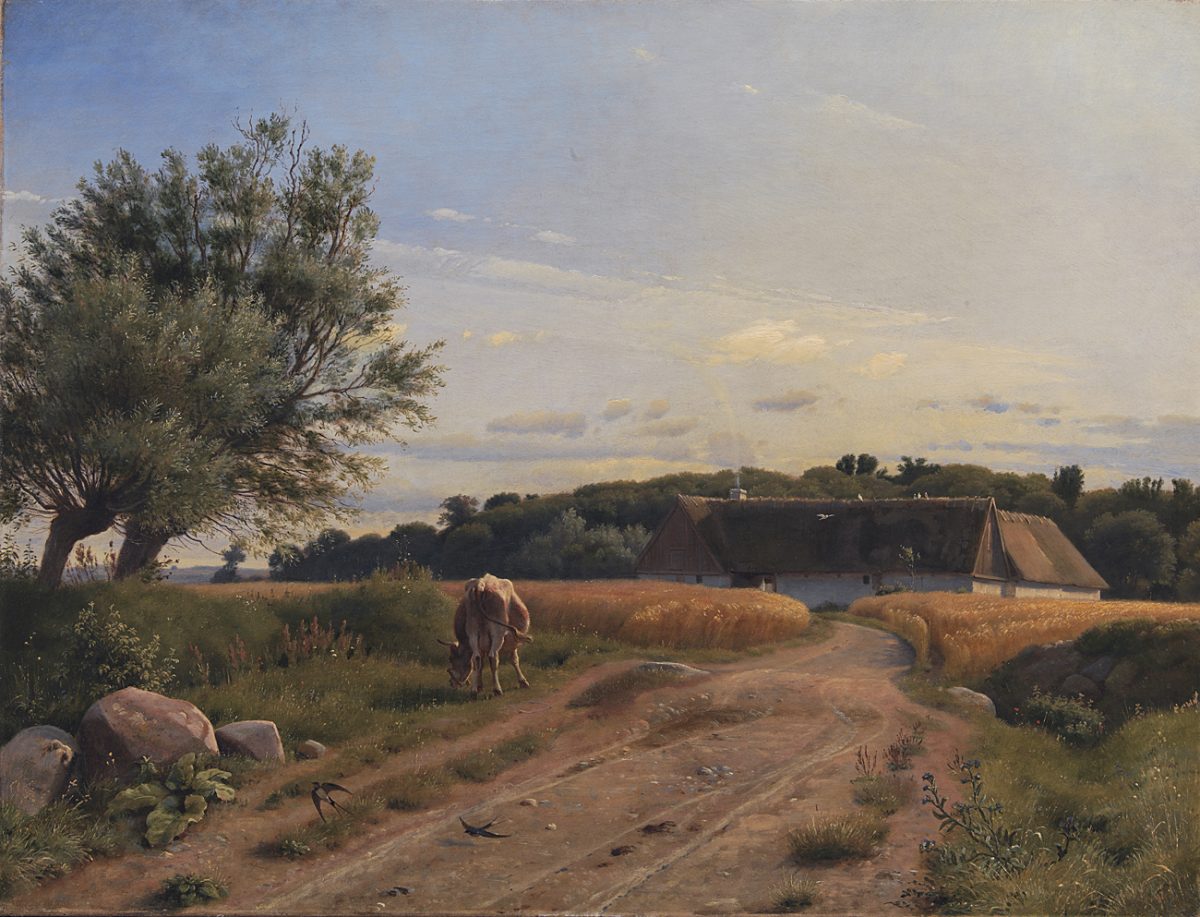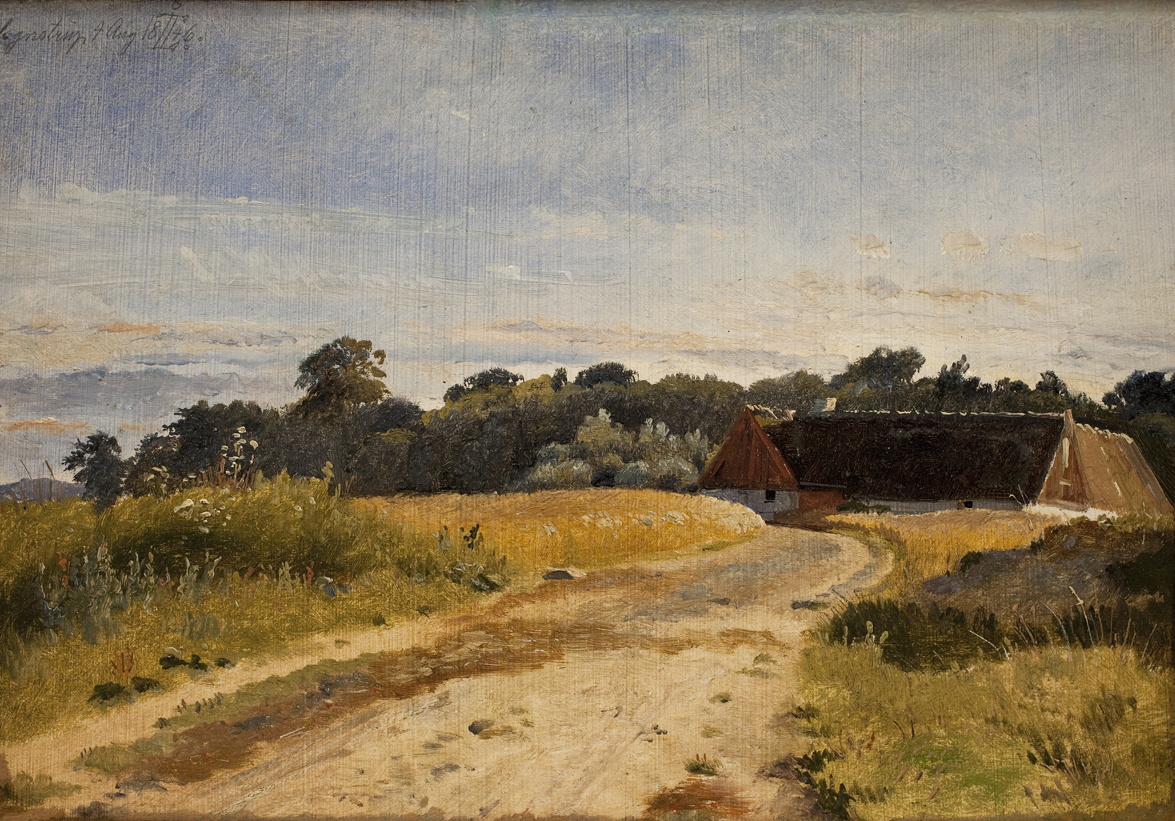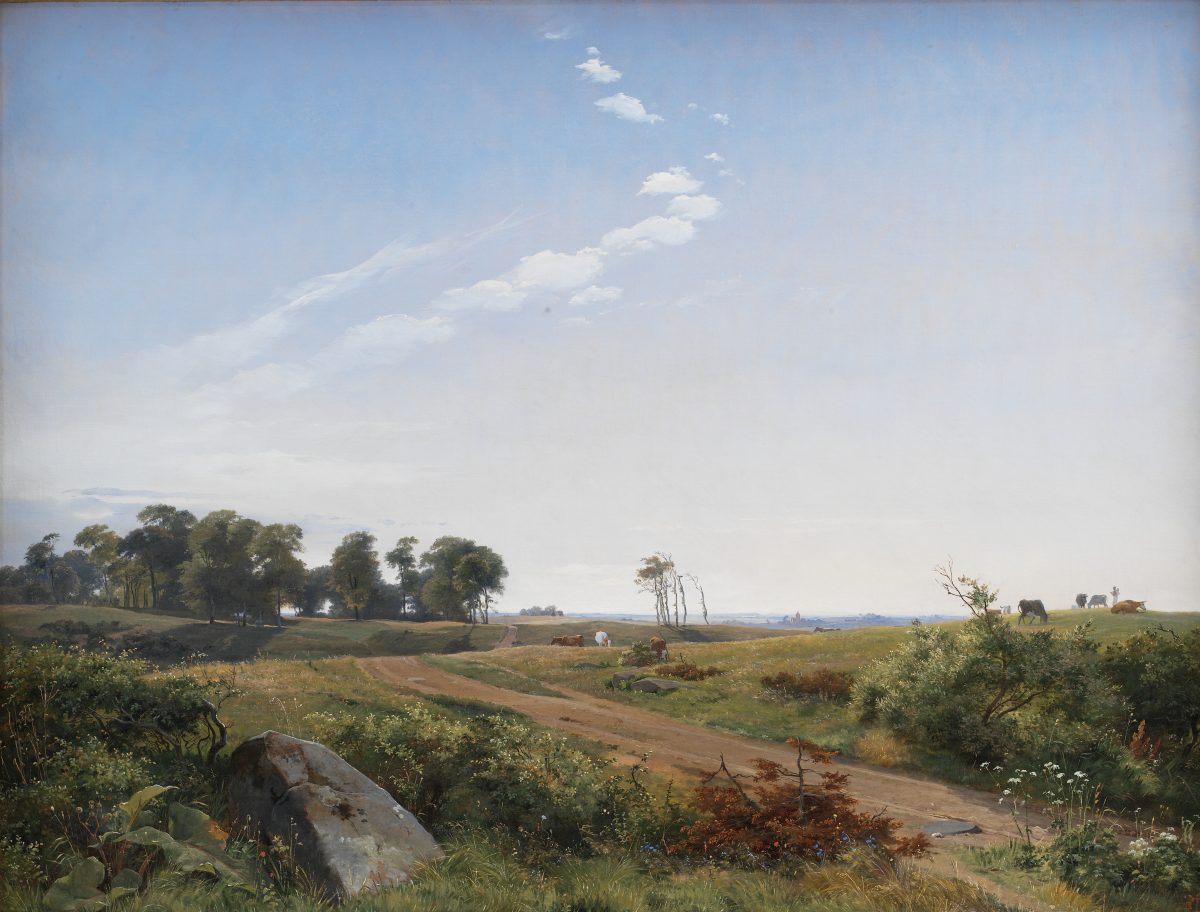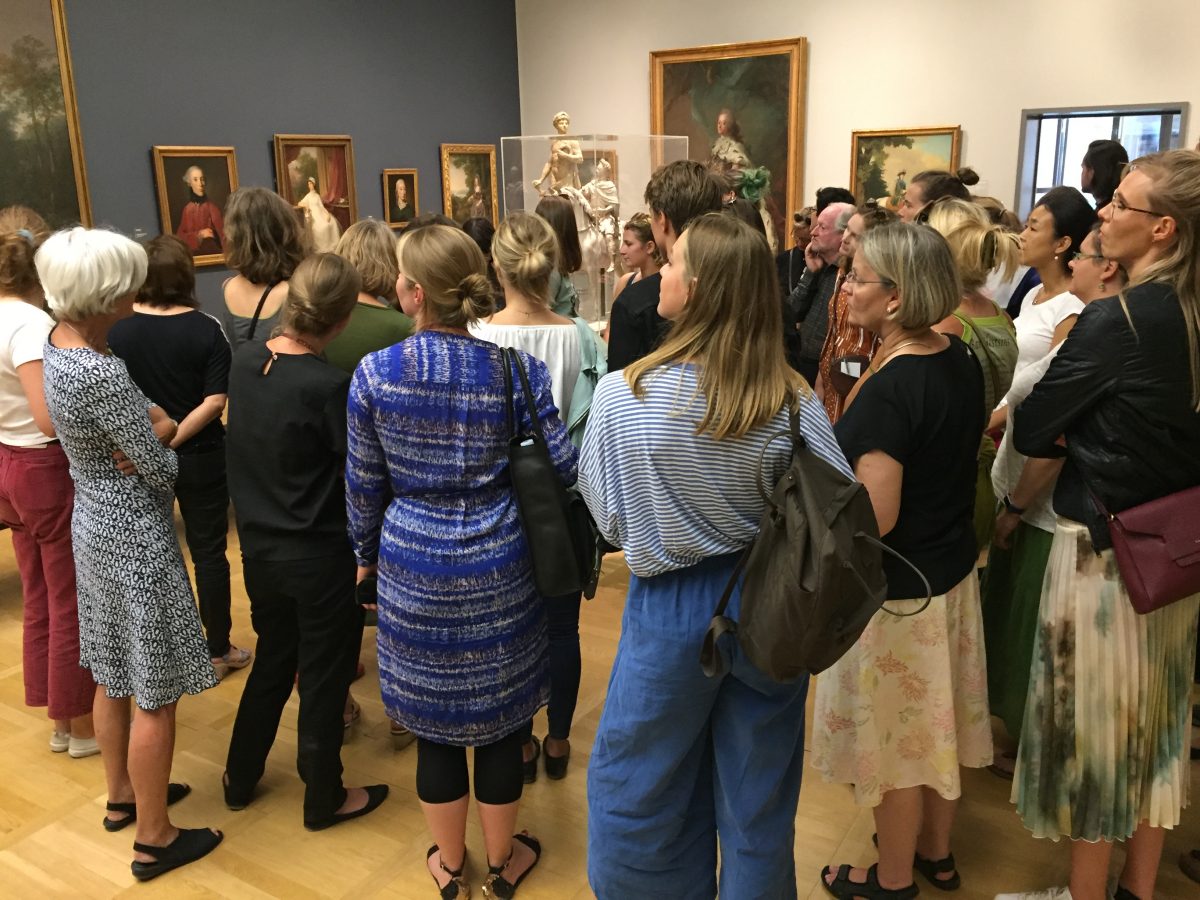Green Feathers is a text based artwork written to be performed as a guided tour. It was written for the exhibition Danish and Nordic Art 1750-1900 at the National Gallery of Denmark and evolves around the experiences of the non-human animals inhabiting six of the paintings that can be seen in the exhibition.
The text brings forward the imagined experiences and dreams of the parrot, gees and cows of the six paintings, centering on a less anthropocentric version of art history while using anthropomorphism and empathy as methods to imagine these new experiences.
What is it like to be part of the history of art and its production system of oppression and violence? What happens if we refuse to read the once living symbolically and instead recognise agency?
•
Green Feathers belongs to one of the chapters of my phd project together with two more chapters of guided tours titled On the Back of a Huntsman and The We and I of the Bishops House. Green Feathers was made in collaboration with the European Society for Literature, Science and the Arts Conference GREEN 2018, Green Friday at the National Gallery of Denmark and partially funded by Konstnärsnämnden through a project grant.
These are the six following paintings that the work is based on:
Mendel Levin Nathanson’s Elder Daughters, Bella and Hanna 1820 by C.W Eckersberg (1783-1853)
Plucking the Gees (Julegæssene plukkes) 1904 by Anna Ancher (1859-1935)
Zealand Landscape. Open Country in North Zealand 1842 by Johan Thomas Lundbye (1818-1848)
Two Cows in an Open Field 1845 by Johan Thomas Lundbye (1818-1848)
A Croft at Lodskov near Vognserup Manor. Study 1846 by Johan Thomas Lundbye (1818-1848)
A Croft at Lodskov near Vognserup Manor, Zealand 1847 by Johan Thomas Lundbye (1818-1848)
•
Here follows a couple of images documenting the tour at the National Gallery of Denmark on June 15 2018 as well as an excerpt from the text of the gees’ of Anna Ancher.
↓
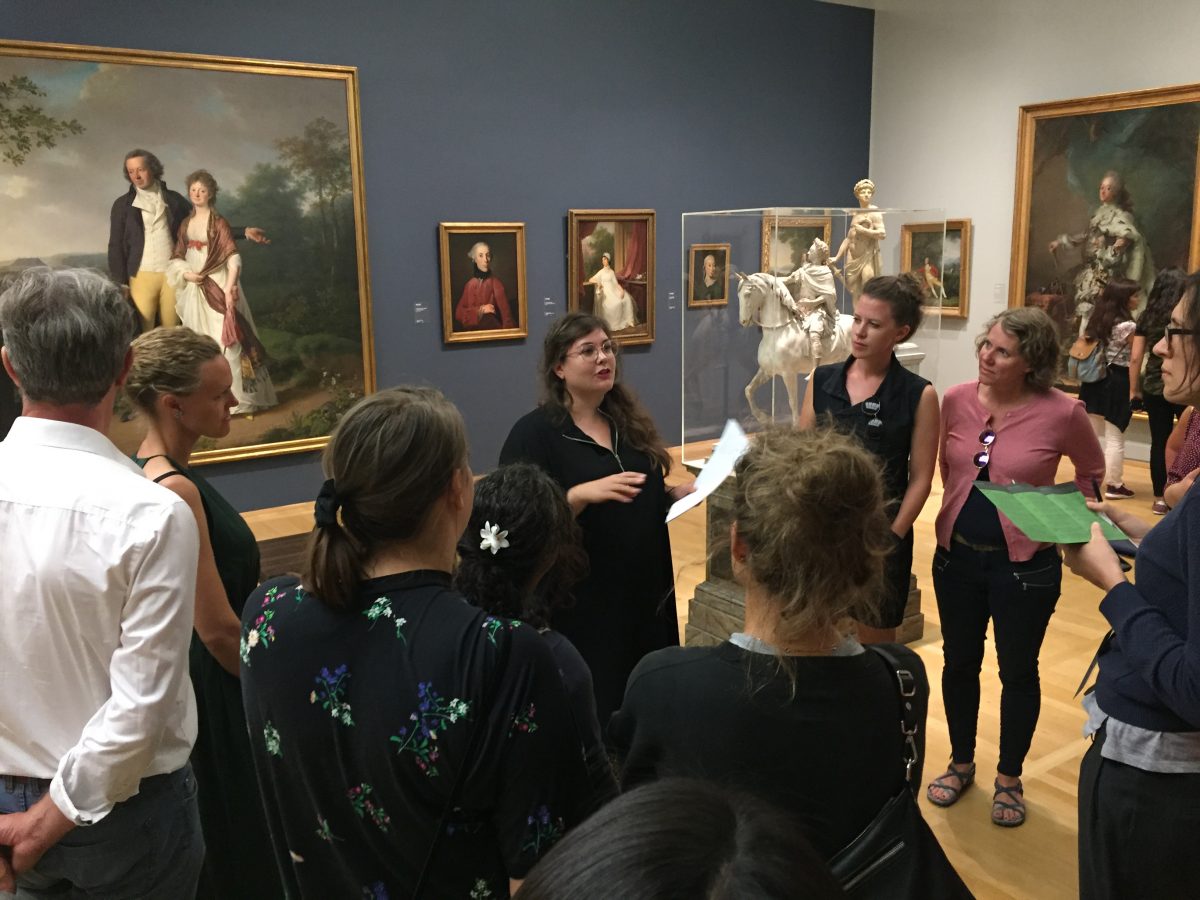
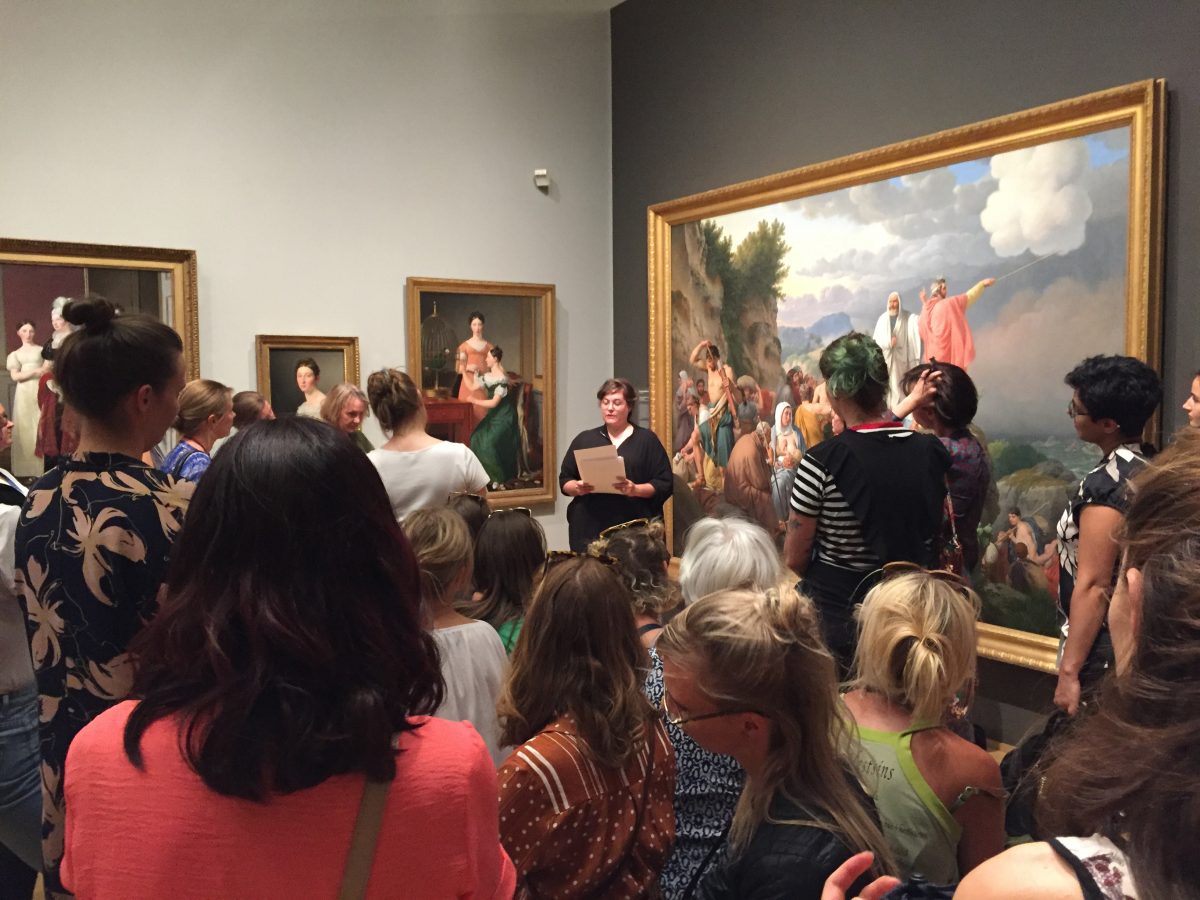
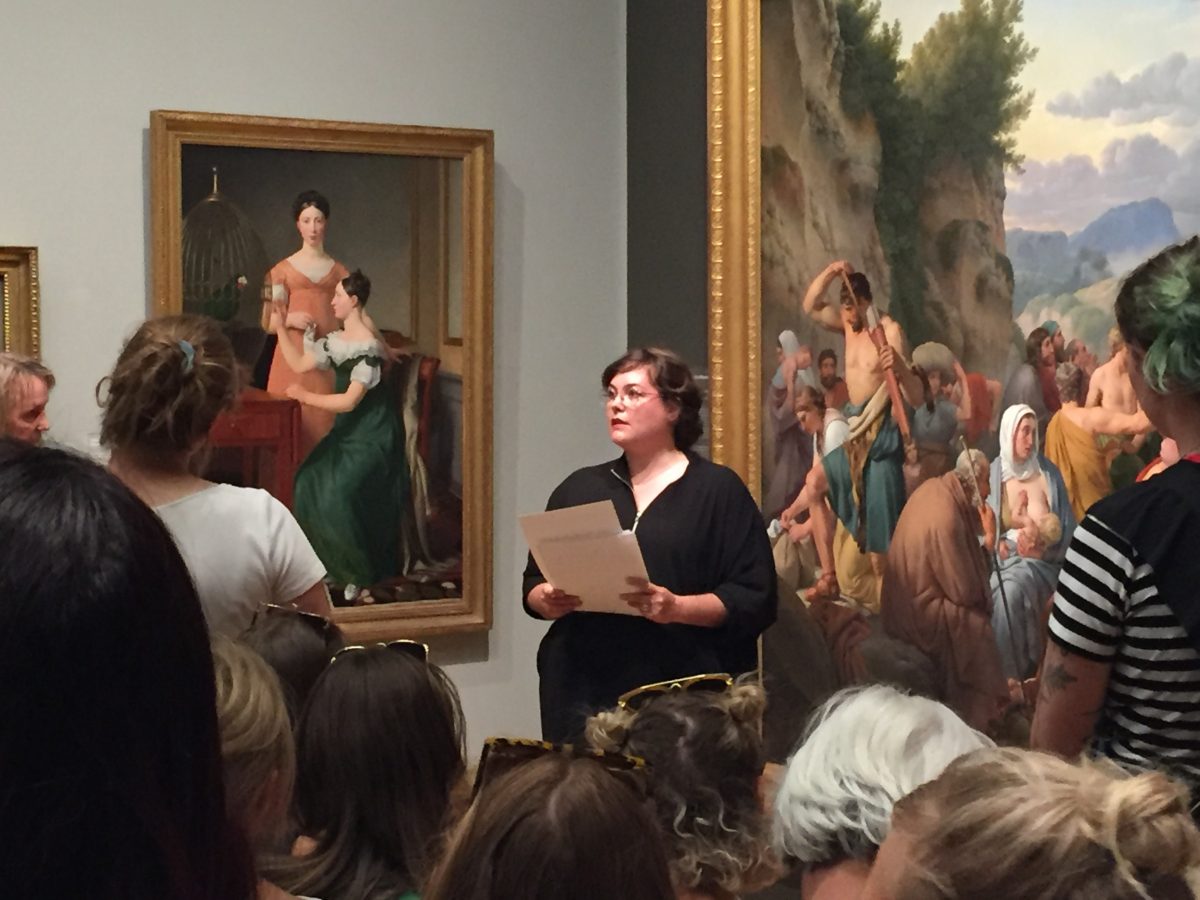
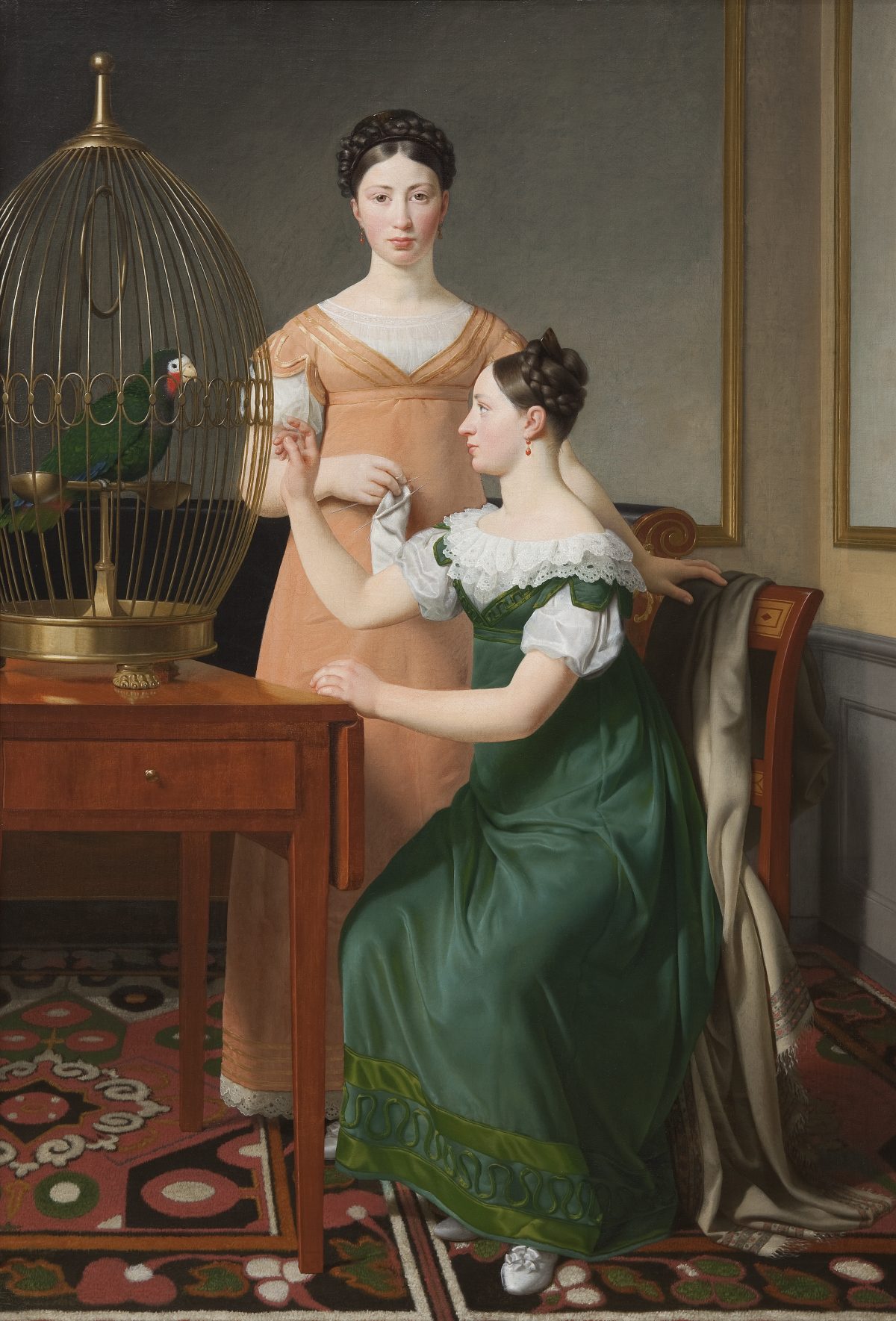
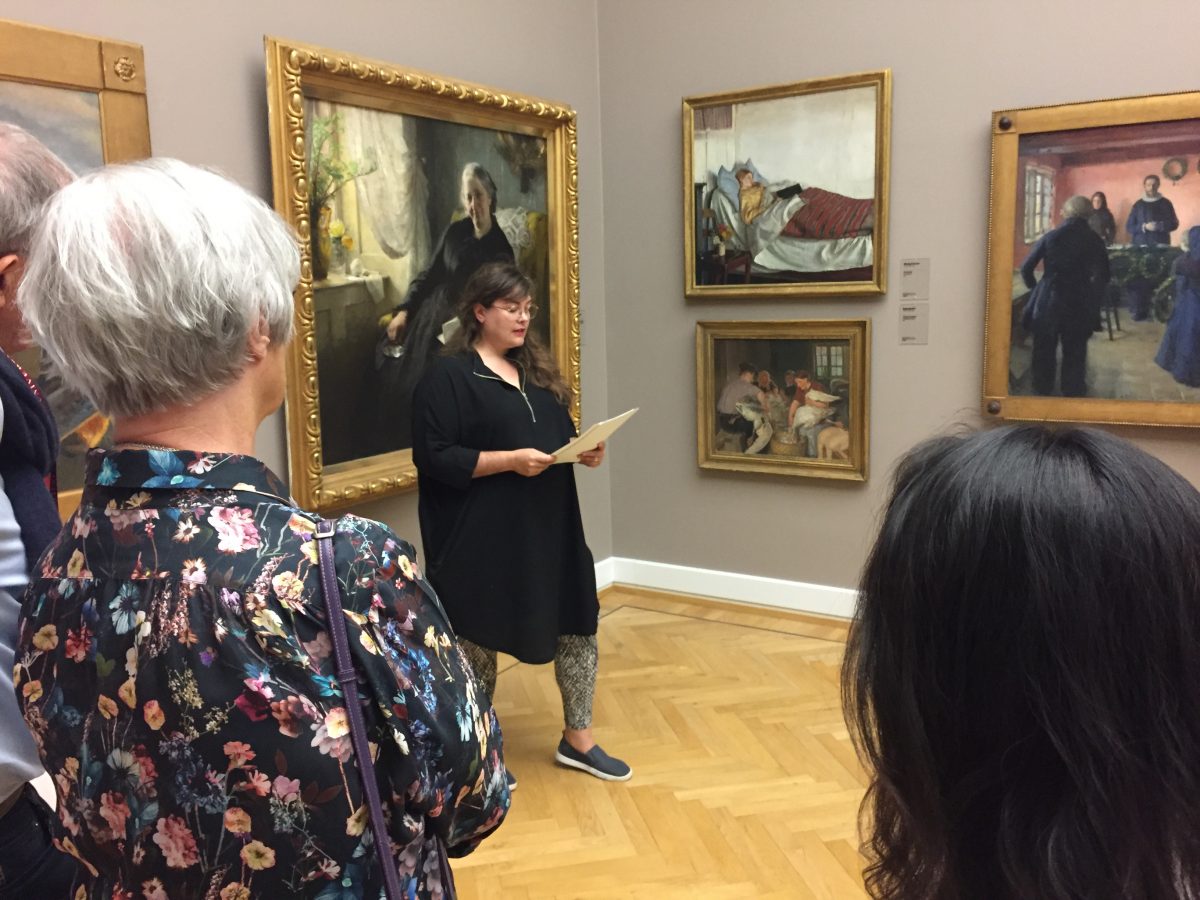
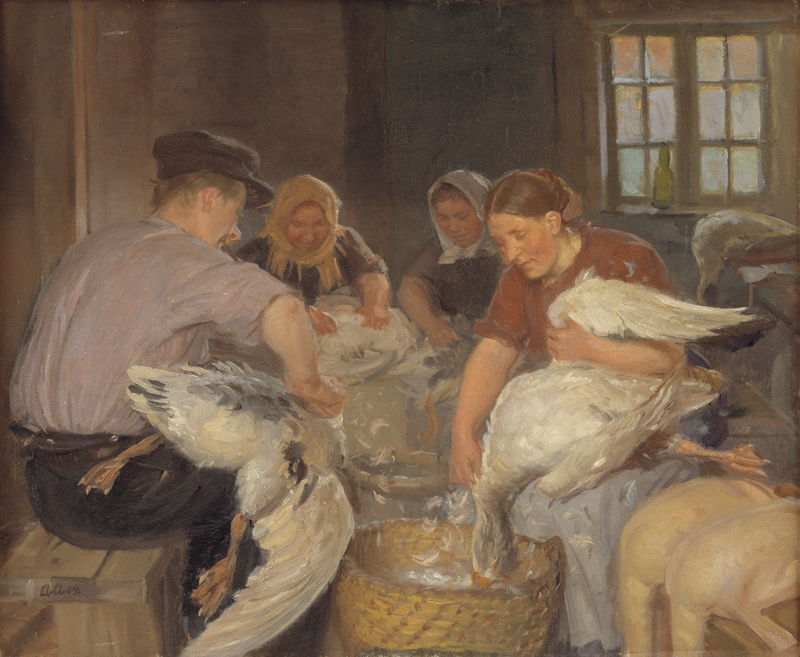
THE CHRISTMAS GEES
The National Gallery of Denmark, first floor, room 222.
The artist is standing in room 222 at the National Gallery of Denmark. To her left the painting Plucking the Gees by Anna Ancher is placed. Around her the audience is gathered. The artist reads:
We are not green. Our size is practical. Easily affordable. Easily handled. Easily killed.
We are placed over laps, hanging over knees, our necks lifeless over the edge of tables and benches. Before this a blunt tool or a rifle was raised by a human. Before that we were fed. Now the same hands pluck, scrape and pull.
Our situation is forever documented by artist Anna Ancher. With the help of binder, pigments, oils and brushes her work transforms the canvas into painting.
White is the colour of our feathers
Red is the colour of our blood
Red is the colour of the women’s cheeks
White is the colour of the candles on the Christmas dinner table
Red is the colour of the tablecloth
White is the colour of the napkins
Red is the colour of the brick of the house where this is happening
Red and white is the colour of the flag
White is the colour of the window frames
Red is the colour under their nails
We will be served at the Christmas table of Brøndums Hotel at the north Jutlandic Island. We would like for this to end differently. We wish for greenness, we wish for flight, we wish for ocean and winds and we wish to fly past this northernmost point of Denmark.
